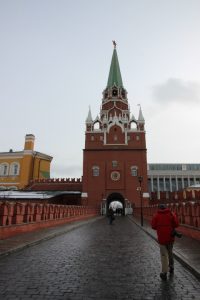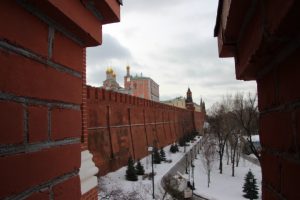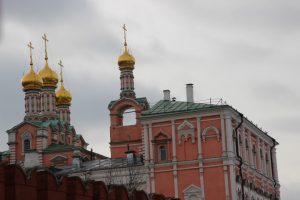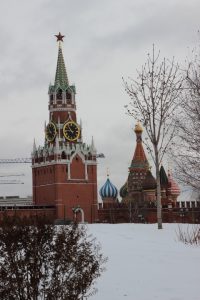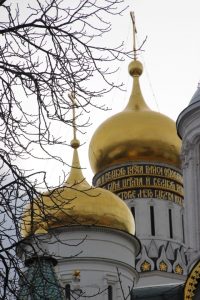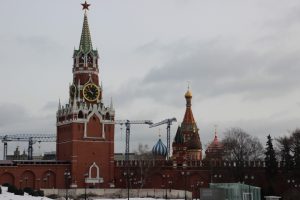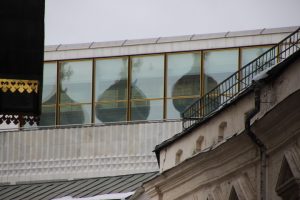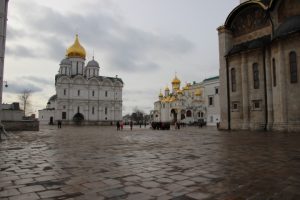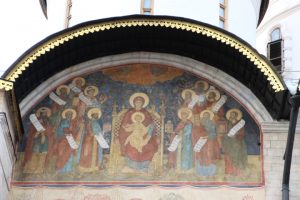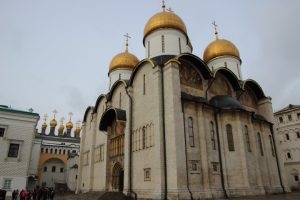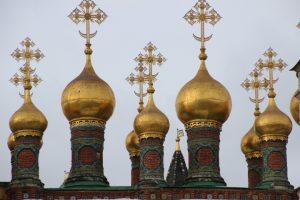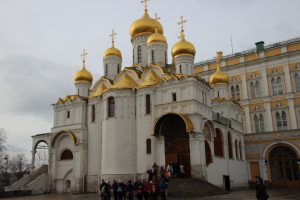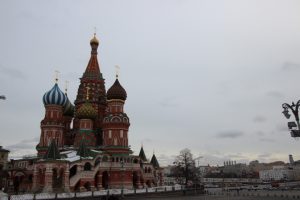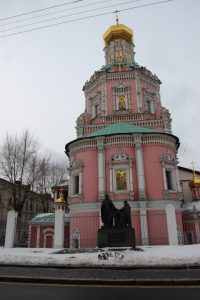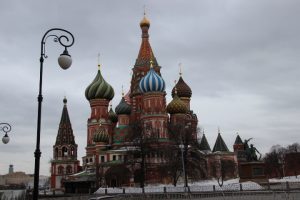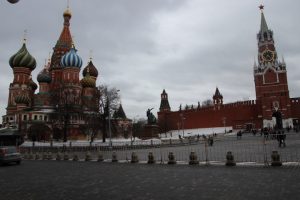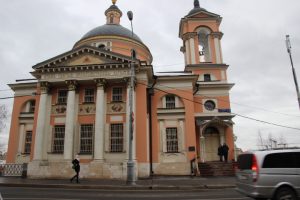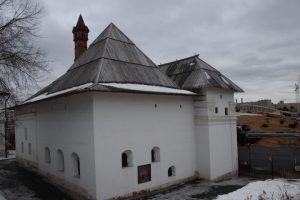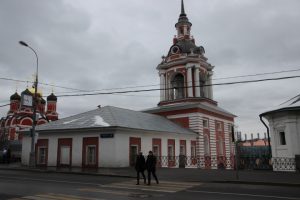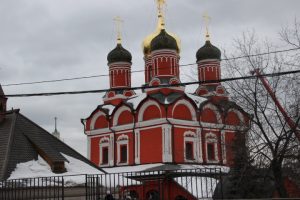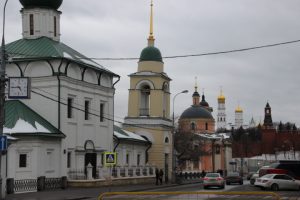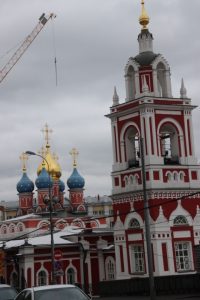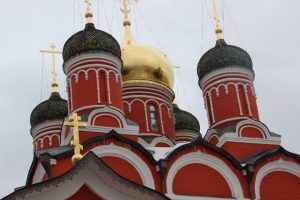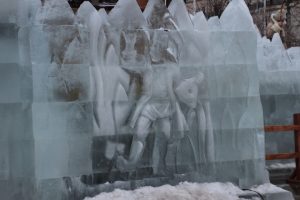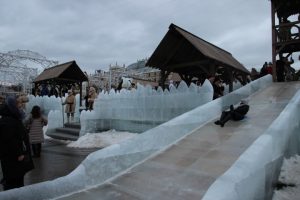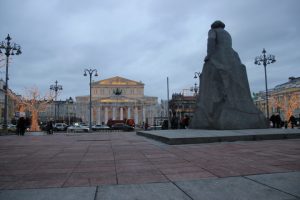The street plan of central Moscow is a pattern of concentric circles which mark the city’s development outwards over many centuries. In the middle is the Kremlin, the fortified hill which is the country’s political headquarters. It is the former citadel of the tsars and now the residence of the Russian president. It has been a symbol of the power of the state for centuries. In 1156 Prince Dolgorukiy chose this site for the first wooden kremlin or fortress. In the 15th century Tsar Ivan the Great organised a major reconstruction which included the present ensemble of cathedrals and monuments that form the site today.
One enters the fortress through the Trinity Gate Tower by the main highway near our hotel.
Soon one is surrounded by white-washed walls and golden domes such as those that top the Assumption Cathedral, the Great Bell Tower and the Archangel Cathedral. Later one can stroll through the gardens close to the perimeter wall overlooking the Moscow River. We exited the fortress into Red Square by the the Savior’s Tower close to St Basil’s Cathedral.
Across the Square is Moscow’s first suburb, Kitay Gorod which was settled in the 12th century by traders and workers. The word Kitay is thought to refer to the wattle and daub ramparts that surrounded the suburb. Red Square was initially the market place where merchants from across Russia and as far away as Britain traded from the 16th century.
In the early evening we explored the late 15th century area behind Red Square which is on a bluff above the Moscow River. Here a number of boyars, including the Romanovs built their estates to control the trade along the major route way in and out of Moscow. In the 19th century this became Moscow’s financial district and continues today as a major cultural and historic area. In fact as we write a major complex including a music amphitheatre is under construction and overlooked by 17th century churches.
One church, St. Maxim the Blessed, was paid for by Novogrod merchants and was consecrated in 1698.
Next door is the Old English Court which has been restored to its 17th century appearance. This merchant’s residence was given to visiting English traders by Ivan the Terrible in the hope of securing arms and other goods from them.
Further along the road is the Palace of the Romanov Boyars which was originally occupied in 1607 by Nikita Romanov and is now a museum that explains the life of such noble families in the 16th and 17th centuries.
Returning to the hotel we passed through the Spring Fair and saw an ice castle amongst the stalls perfectly illuminated by the lights in front of the Bolshoi Theatre and the looming statue of Lenin.
Before returning to the hotel we checked on progress for the 2018 World Cup.
